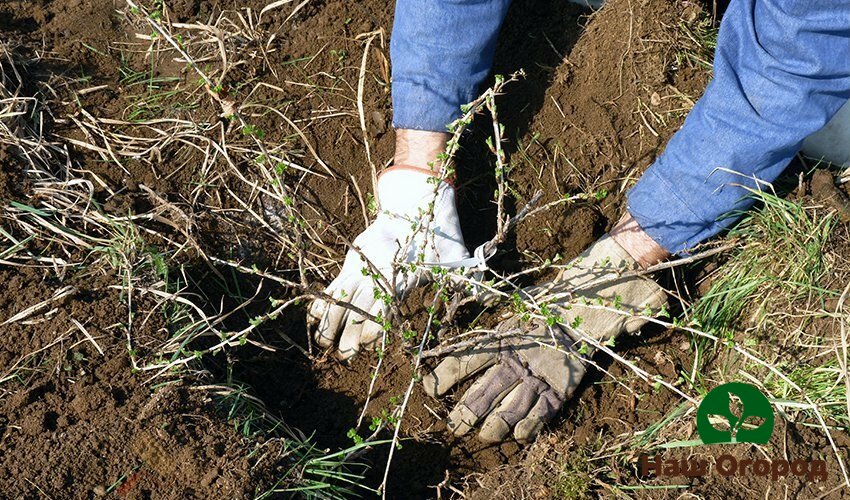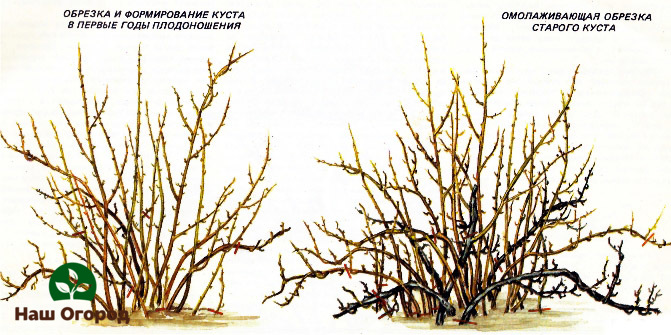Important tips and tricks for growing gooseberries
Content:
Did you know that the second name for gooseberries is "northern grapes"? This tasty and healthy berry is not capricious, and even in the absence of proper care for it, it can bring a good harvest. But if you make even a little effort and follow the rules for growing gooseberries, then he will thank you with a large number of large and tasty berries.
What is important to know about planting gooseberries
Gooseberry bushes love sod-podzolic, medium and light loamy, and even sandy loam soil. In addition, it is quite tolerably able to grow, develop and bear fruit in slightly acidic soil. The landing site should be sunny, well-lit and calm. If you are inattentive and plant gooseberry bushes in moist soils, where there is water, then the plant is likely to be taken over by ashtrays.
The gooseberry bush is planted in a planting pit up to 30 cm deep (approx. 60 cm). About 10 kg of mullein, superphosphate (150-240 g), potassium are placed in the hole. salt (40 g) or wood. ash (300 g), as well as ground limestone (150-350 g). To improve aeration, add peat (2.5-3 buckets).

Young bushes are planted directly, without tilting the plant, but trying to deepen the root collar by 5-6 centimeters, and sprinkle the lower branches with soil. After planting, they immediately compact the soil around, cut off the shoots to 3-5 buds and water well (at least 5 liters of water per bush).
Some secrets for caring for gooseberries
Despite the fact that the gooseberry is a completely unpretentious plant, in order for it to bring a good harvest, you need to try.
1. In the fall, it is required to dig up the earth to a depth of 12-15 cm, in no case damaging the root system.
2. In the spring, it is necessary to loosen the soil near the bushes (by 6-8 cm), and in the aisles (by 10-12 cm).
3. After loosening, mandatory mulching is required around the circumference of the trunk circle with peat or compost.
4. In the dry season, constant watering is necessary, especially during the active growth of the plant (when the ovary is formed, and also half a month before the harvest).
5. In the 1st year, feed the young plant with fertilizers with nitrogen (ammonium nitrate is suitable, as well as urea, a sufficient amount - up to 20 g per 1 m2), followed by loosening.
6. From the 2nd year, the dose of nitrogen fertilizers is increased to 25 grams.
7. Top dressing with mineral fertilizers is carried out 1 time in 3-4 years (up to 25 g per 1 m2).
8. Organic matter is added 1 time in 2-3 g (up to 6 kg per 1m2).
Growing gooseberries and pruning
Gooseberry bushes are pruned in the first fall. By this time, he will have grown to six annual shoots. Of these, the 4 strongest are chosen, and the rest are cut off. In the fall of the second year, there will already be 4-5 biennial shoots on the bush and the same number of annuals.
Each subsequent autumn, from the grown basal branches, three to five of the strongest are left, the rest, especially those that are dried up, weak and fallen to the ground, are cut off. By the time the fruits ripen, there should be at least ten to fifteen branches on the bush. On a 5-6-year-old gooseberry bush, about three to four weak, non-fruiting branches are removed every year. Instead, they are replaced by the same number of basal annual shoots.
Gooseberry bushes are pruned in autumn or early spring before bud formation. Branches are cut with pruning shears at the very surface of the earth, without leaving hemp (harmful insects may appear in them).

If you follow these simple rules for the care of this wonderful plant, you will definitely get a wonderful harvest of tasty and healthy berries.

